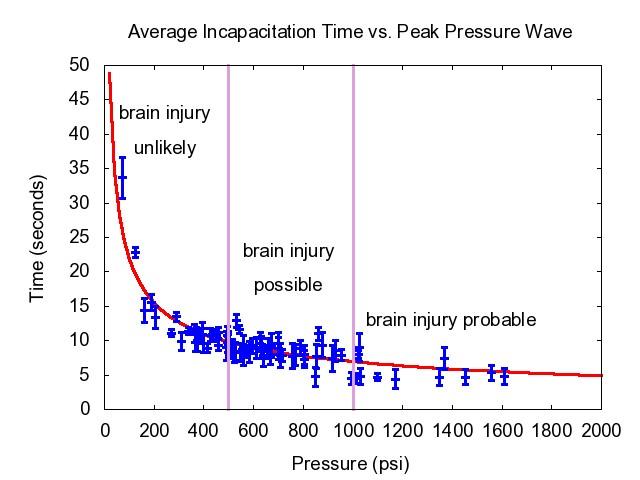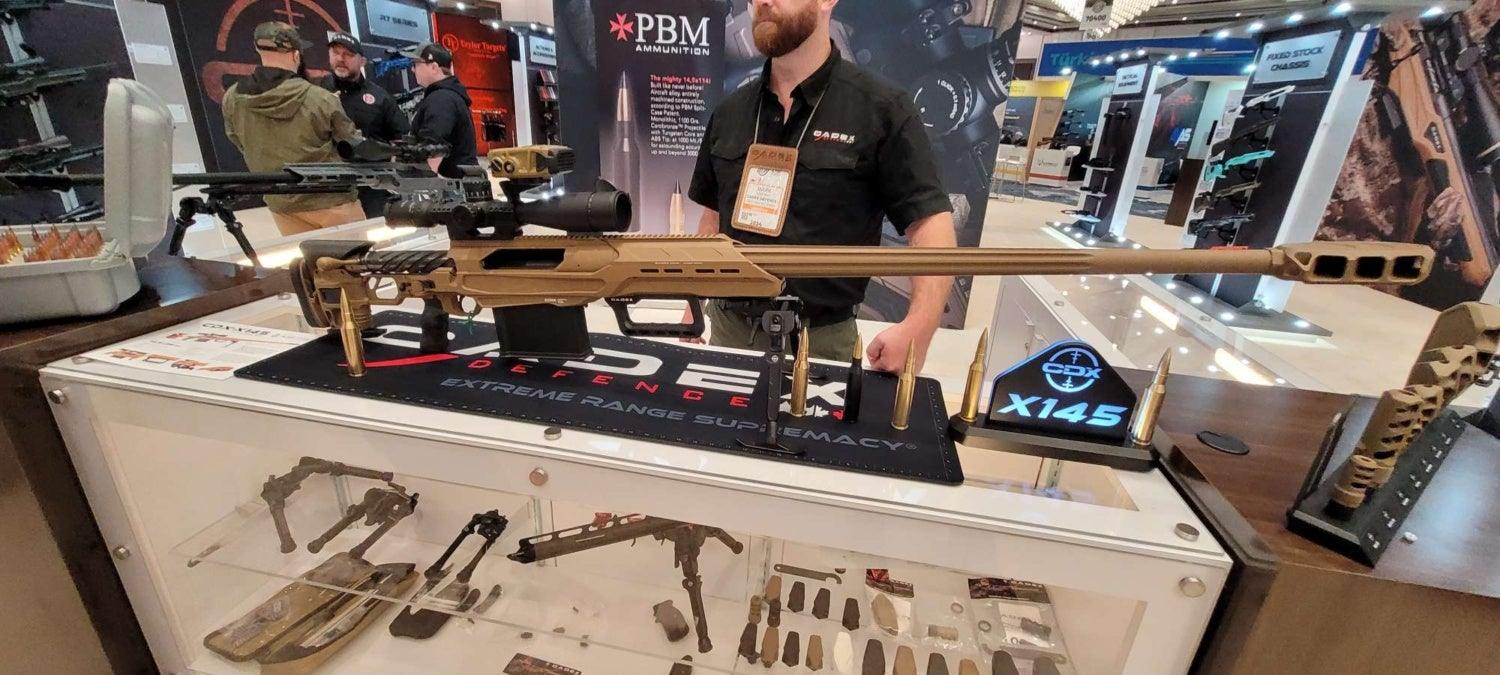Well said, Sir! You wrote a dissertation compared to my 1 sentence response in #143.I read through a whole bunch of this thread but not all. If what you choose to read below has been already been covered, my apologies. These are my thoughts.
The old time minimum required energy numbers, killing power calculations, and the like, are a largely useless pool of numbers. Folks want so badly to be able to quantify the killing power of a bullet or cartridge, but it's just not possible. If you like to look at those numbers to compare cartridges, that's cool, but using them as a guideline for killing game is useless. Like some have mentioned in this thread already, shot placement is, in my opinion the most important consideration followed by bullet performance on flesh.
The evolution of modern metallic cartridges, bullet design, etc., is slow... especially in the hunting world. Rifle bullets are rifle bullets. We have small design changes here and there to increase drag resistance, but the bullets are the same. Cartridges are in the same boat. We take some body taper out of a case here and change a shoulder angle there, apply some marketing and we have the next "gotta have" cartridge.
I have to laugh when I hear things like "Energy is Irrelevant" and "Only Impact Velocity Matters." That's similar to saying only horsepower matters to a drag racer, or a truck driver, or anyone for that matter, and we can forget about torque.Those are outrageous claims looking to illicit an emotional response from people. We see it on social media.... We saw it in this thread. Mission accomplished.
Minimum impact velocities exist because of how the bullets are designed. When you have a single slug that can be shot out of different cartridges producing a wide range of velocities from, let's say 2,000 FPS to 4,000 FPS, which then could translate to impact velocities on flesh just slightly slower than these numbers, compromises must be made. Basically, it's impossible to build a bullet to provide ideal terminal ballistics from its peak velocity to 0. Most manufacturers have designed their supersonic hunting bullets to perform with adequate terminal effect, north of 1700 - 1800 FPS. Those of us who have hunted a lot and killed a lot of animals with different bullets through different cartridges at different speeds can attest to how speed effects bullet performance, and more importantly how unpredictable bullet performance can be.
That leads us to these claims like I mentioned above, that insinuate we only need to worry about one thing like velocity, specifically impact velocity. Well, again this doesn't paint the whole picture. Impact velocity is nothing without mass.... and energy is the byproduct of mass and velocity. Saying one is more important than the other, or one is completely irrelevant, is, once again, click bait and bad information. We need velocity and mass (KE = 0.5 × m × v²) to ensure penetration. Bow hunters understand this. Take a 40 grain arrow at 300 FPS and go shoot an elk or bear and see what happens. Bump the arrow weight up to 400 grains at the same velocity and you have something (theoretical numbers). We need perfect shot placement to poke holes in vitals, and the icing on the cake is a bullet that works as designed to disrupt tissue, fluid and a larger vital zone. We expect optimal bullet performance everytime, but that is not always the case. If you have good shot placement, you will still have an ethical kill no matter what the bullet does. I've personally seen this many times and I'm sure many of you have as well.
Velocity alone guarantees nothing. It doesn't guarantee your bullet will open up into a perfect petal with 100% weight retention, it doesn't guarantee a pass through, it doesn't guarantee penetration through dense muscle and bone. Most of us have experienced bullet failures of some sort on game. Impact on flesh results in a 100% unpredictable outcome every time. That is a fact. Lab conditions simply don't exist in the field and the variables change every time. Numbers are nothing more that a comparative tool in this game, impact on living tissue in **field conditions** is not quantifiable.
Cheers.
You are using an out of date browser. It may not display this or other websites correctly.
You should upgrade or use an alternative browser.
You should upgrade or use an alternative browser.
How Much energy is too little?
- Thread starter WyoTex
- Start date
-
- Tags
- minimum energy opinion
 Help Support Long Range Hunting Forum
Help Support Long Range Hunting Forum
Hugnot
Well-Known Member
If the deers & elks had steel armor plate I would go for kinetic energy, like E = 1/2 M V^2, E as foot pounds. Velocity is the big player as velocity is squared in the calculation. Many clubs don't like zippy high velocity rounds as they are steel target destructive. Some war weapons had crazy high MV's over 5,000 fps for use against armor. The olde .220 Swift 48 grain load @ over 4,000 fps had a good rep. as destructive blaster.
My thinking is penetration to destroy vital organs is more important for the deers & elks, like a diagonal hit requiring up to 3 feet of penetration to destroy a vital organ or support structure (bone). An argument against this is "hydrostatic" shock.

 en.wikipedia.org
en.wikipedia.org
and
quotation
" This paper reviews the scientific support for a ballistic pressure wave radiating outward from a penetrating projectile and causing injury and incapacitation. This phenomenon is known colloquially as "hydrostatic shock." The idea apparently originates with Col. Frank Chamberlin, a World War II trauma surgeon and wound ballistics researcher. The paper reviews claims that hydrostatic shock is a myth and considers supporting evidence through parallels with blast, describing the physics of the pressure wave, evidence for remote cerebral effects, and remote effects in the spine and other internal organs. Finally, the review considers the levels of energy transfer required for the phenomenon to be readily observed."
Cavitation effects of high velocity impact penetrations also need to be considered.
I don't shoot deers or elks but if I had to kill one with one of my small caliber zippy rifles I would go for a solid copper bullet that would penetrate some 3 feet of animal for the likely probability of a less than ideal broadside shot. I might be able to kill about 50 or more pop can size rodents if they lined up single file with a 95 grain Barnes solid copper bullet at 3,000 fps MV.
My thinking is penetration to destroy vital organs is more important for the deers & elks, like a diagonal hit requiring up to 3 feet of penetration to destroy a vital organ or support structure (bone). An argument against this is "hydrostatic" shock.

Hydrostatic shock - Wikipedia
and
quotation
" This paper reviews the scientific support for a ballistic pressure wave radiating outward from a penetrating projectile and causing injury and incapacitation. This phenomenon is known colloquially as "hydrostatic shock." The idea apparently originates with Col. Frank Chamberlin, a World War II trauma surgeon and wound ballistics researcher. The paper reviews claims that hydrostatic shock is a myth and considers supporting evidence through parallels with blast, describing the physics of the pressure wave, evidence for remote cerebral effects, and remote effects in the spine and other internal organs. Finally, the review considers the levels of energy transfer required for the phenomenon to be readily observed."
Cavitation effects of high velocity impact penetrations also need to be considered.
I don't shoot deers or elks but if I had to kill one with one of my small caliber zippy rifles I would go for a solid copper bullet that would penetrate some 3 feet of animal for the likely probability of a less than ideal broadside shot. I might be able to kill about 50 or more pop can size rodents if they lined up single file with a 95 grain Barnes solid copper bullet at 3,000 fps MV.
Last edited:
I like to fall back on optimum game weight formula by Ed Matunas as it appears in the Lyman reloading manual # 47. Taylor index is a pretty good indicator as well. I still use the old 1000 ft. Lbs. for deer sized and 1200 for Elk at the range where those numbers occur. Also, I like to know the manufacturers recommended minimum impact velocity for the bullet to expand. Those numbers work so why overthink it? Also, why argue for lower numbers or seek alternative answers to the tried and true? Most of my rifles get those numbers at 600-800 yards...that works for me--I'd be OK with shooting them at 50 yards.
NCWshooter
Well-Known Member
I'm right there with you and a year older both in age and when you started hand loading. There is more than energy alone that makes a cartridge good. We know over the years our experiences that tell us what expect. I think there are more knowledgeable people on this medium and others than ever before, but you still have to sort it out and that happens by doing.If I understand what you're implying, I wholeheartedly agree…..energy is far overrated! It's been pushed/instilled into our thoughts long before this 71 year old started reading everything he could find pertaining to firearms…..and I was hand loading @15 yo.
I've posted this before, but I suspect that those that worship at the ft/lbs energy throne will never read it! memtb
So what I'm drawing from this thread is I need to build something bigger than my 375 EnABELR that will shoot bullets heavier than 425 grains and push them from 2900-3000fps.
These ground squirrel guns are getting expensive.
These ground squirrel guns are getting expensive.
Yeasssssssss!So what I'm drawing from this thread is I need to build something bigger than my 375 EnABELR that will shoot bullets heavier than 425 grains and push them from 2900-3000fps.
These ground squirrel guns are getting expensive.
WyoTex
Member
I'm considering starting a new thread of equally divisive subjects like "What is the Best cartridge for Elk", or deer, or prairie dogs.
NAH! I promise. I won't.
JK
NAH! I promise. I won't.
JK
memtb
Well-Known Member
I'm considering starting a new thread of equally divisive subjects like "What is the Best cartridge for Elk", or deer, or prairie dogs.
NAH! I promise. I won't.
JK
If for all of the above critters……I thought that question was already answered by Hornady!
X2!Yeasssssssss!
This should work for ground squirrels.

 www.thefirearmblog.com
www.thefirearmblog.com

[SHOT 2024] Cadex Defence Introduces CDX-X145 Sniper Rifle -
At SHOT Show 2024, Cadex Defense presented their new CDX-X145 rifle, a long-range anti-materiel bolt action rifle chambered in 14.5×114mm.